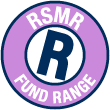



The Royal London Sustainable multi-asset fund range is a range of four multi-asset strategies that aim to deliver capital growth over the medium term (3 to 5 years) by investing in a diverse range of assets whilst adhering to the investment manager’s ethical and sustainable investment policy. The funds invest in a combination of equities and fixed income, with each fund’s exposure to equities rising incrementally as you move up the risk scale. They are managed to a well-established and proven investment process which has resulted in some strong returns over the longer term whilst investing in companies that are helping us move towards a more sustainable society.
Click here to read the Royal London approach to ESG investing.
The Royal London Sustainable Multi-Asset funds are actively managed. The range comprises
| Fund | Sector | Launch Date | Volatility Target |
|---|---|---|---|
| Sustainable Managed Growth | IA Mixed Investment 0-35% Shares | December 2012 | N/A |
| Sustainable Diversified | IA Mixed Investment 20%-60% Shares | December 2012 | N/A |
| Sustainable Growth | IA Mixed Investment 40%-85% Shares | May 2022 | N/A |
| Sustainable World | IA Mixed Investment 40%-85% Shares | November 2012 | N/A |
The Royal London Sustainable Trusts funds invest primarily in a combination of equites and fixed income with the asset allocation split remaining relatively fixed over time. Exposure to one entity, via equity plus debt, will be restricted to 5% of a fund’s total AUM. The funds are managed by the Sustainable Investment team which is headed by Mike Fox, who is responsible for the overall strategy and the equity allocations across all the Sustainable funds. The team favour a collegiate approach to the management with Mike Fox, George Crowdy and Sebastien Beguelin being co-fund managers of the Royal London Sustainable Diversified fund, Sustainable Growth fund and Sustainable World fund. Shalin Shah and Matt Franklin are co-managers on Royal London Sustainable Managed Growth and are responsible for the fixed income allocation across all of the multi asset sustainable funds. They are supported by dedicated investment analysts who undertake both sustainable and financial analysis on a global basis. The team run all the strategies with a number of unified principals:
Sustainable – Products and services must help the transition to a more sustainable society. This leads to a cleaner, healthier, safer, and more inclusive society. There is also a focus on companies with good ESG standards, specifically on ESG Leadership by encouraging good corporate behaviour.
Financial
The investment process is set up to be mainly proprietary in nature, they do draw on third party research, but they are allowed to conduct their own work and review this research with their own eyes and create their own intellectual property. To be included in the funds, companies must first to pass a sustainable as well as financial assessment. Within the funds’ equity allocation, a company is scored from both a sustainable and financial perspective to provide a consensus view of the company. The financial score is focused on value creation (returns ahead of cost of capital) and valuation (fair price) with the sustainable research focused on the company’s products and services (cleaner, healthier, safer, more inclusive society) and ESG leadership (encouraging good corporate behaviour). From this initial score, the Sustainable Equity team apply their differentiated analysis, this is the most important part of the process. Both the Sustainable and Financial elements of the scoring have a maximum score of 50 with a hurdle rate of 25 for each. Some areas are more easily quantifiable than others with subjectivity applied to some areas. If a stock scores above 25 on the sustainable side, then the company can go ahead to be scored on the financial side. The output from these scores is then applied to recalibrate the original positioning of the company on the sustainable and financial chart. The output from this may result in a company being recalibrated outside of the threshold for consideration or uplifted to be included for consideration.
For the funds’ fixed income allocation, the core principles are the same as for the equity allocation but with the financial component geared more towards fixed income. The investment process covers the following steps:
Security selection covers three stages:
The combination of these three parts allows the team to determine whether a credit spread is providing sufficient compensation for overall risk.
In terms of ESG, the team state that this research is vital to credit research as it impacts the risk profile of the issuer. The nature of the funds’ mandate leads to holdings where the provision of debt is to support the move towards a more sustainable society. This can be through companies that provide socially and environmentally useful products and services, or those with strong ESG management.
The funds are predominantly positive screened, although there are exclusions in place that filter out businesses in the areas of human rights abuse, tobacco and armaments manufacture, products which involve experiments on animals (except for those conducted for the benefit of human or animal health) and the generation of nuclear power. Companies are also avoided if they generate over 10% of their turnover from any one or a combination of the areas of animal fur products, pornography, irresponsible gambling, irresponsible drinking and worker exploitation or exploitative consumer practices. Fossil fuels are sub-divided into the three areas: extraction, power generation and services. For extraction, the funds will not invest in oil and gas or coal mining companies. For power generation, if the company has material exposure to renewable energy with a commitment to move away from gas and coal, the team will consider investing. For services, if a company is providing services to extractive industries that are making them safer and materially improving their environmental impact, the team will consider investing.
There is an external Advisory Committee that independently challenge and provide insight into the environmental, social and governance analysis conducted by the Sustainable Investment Team.
The focus of the funds is on utilising capital to support the transition to a more sustainable economy by investing in companies that are making products and services which help address major environmental and social challenges, including climate change, and are industry leading in their efforts to mitigate their environmental impact. The sustainable investment ability at RLAM is wide, considered, and integrated. The team has a high level of experience, and they continue to build and improve on a process that was first implemented around 20 years ago. Performance over the long term has been good and is testament to the in-depth analysis carried out by the team. Overall, we believe this is a strong proposition, employing a longstanding and proven sustainable investment process with a well-resourced internal team. They should be capable of continuing to deliver competitive risk adjusted returns whilst focusing on investments which are helping to make a positive change to society and the environment.
Important Notice
This document is aimed at Investment Professionals only and should not be relied upon by Private Investors. Our comments and opinion are intended as general information only and do not constitute advice or recommendation. Information is sourced directly from fund managers and websites. Therefore, this information is as current as is available at the time of production.
Rayner Spencer Mills Research Limited is a limited company registered in England and Wales under Company. Registration Number 5227656. Registered Office: Number 20, Ryefield Business Park, Belton Road, Silsden, BD20 0EE. RSMR is a registered trademark.